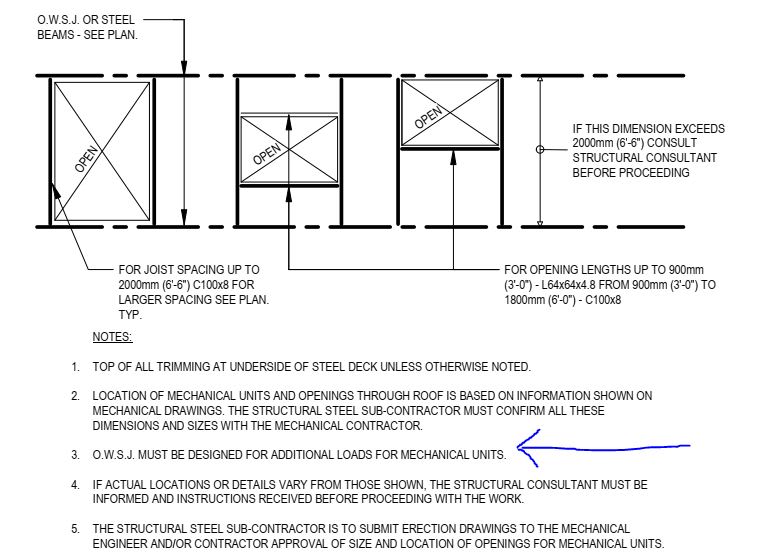Enable
Structural
- Jan 15, 2021
- 788
I've bidding a job where there are a number of additional roof penetrations due to mechanical upgrades (grocery store re-arranging things). The EOR provides a typical trimming schedule for the new openings and per usual has us doing the connection design for all structural steel on the project. That's fine and all. But they also have a note saying "OWSJ must be designed for the additional loading".
I don't do roof openings for others typically and so am a tad confused on what responsibility falls on the EOR vs me in this case. The note makes me think that it's also part of my scope to design the OWSJ reinforcement, if required. But that seems problematic for a few reasons: 1) they don't provide the additional loading from the mechanical units for me to use, and 2) I'm not going to review the OWSJ capacity prior to award to see what might be required.
Am I misreading what that note implies? If so, what's the purpose of it to remind themselves as the EOR to design the retrofit?

CWB (W47.1) Div 1 Fabricator
Temporary Works Design
I don't do roof openings for others typically and so am a tad confused on what responsibility falls on the EOR vs me in this case. The note makes me think that it's also part of my scope to design the OWSJ reinforcement, if required. But that seems problematic for a few reasons: 1) they don't provide the additional loading from the mechanical units for me to use, and 2) I'm not going to review the OWSJ capacity prior to award to see what might be required.
Am I misreading what that note implies? If so, what's the purpose of it to remind themselves as the EOR to design the retrofit?

CWB (W47.1) Div 1 Fabricator
Temporary Works Design

![[wiggle] [wiggle] [wiggle]](/data/assets/smilies/wiggle.gif)